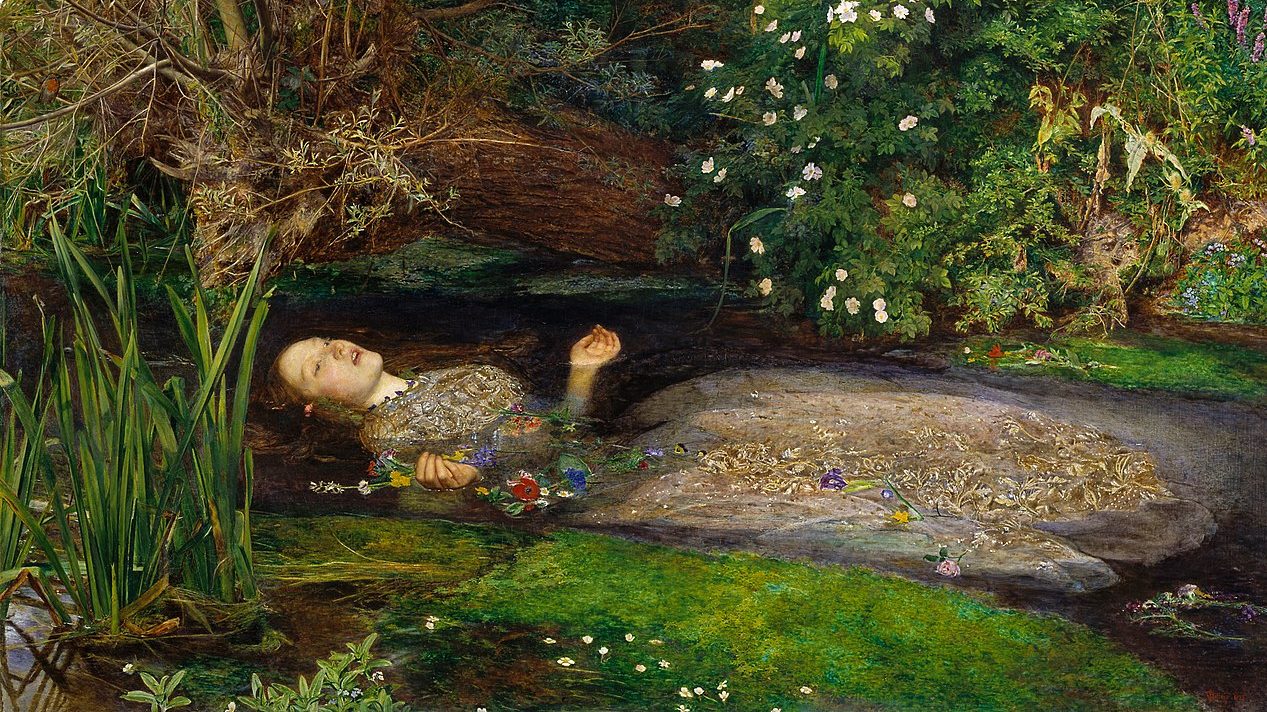In his Critique of Judgement Kant alleges that the sensation of disgust alone produces a mental response so adverse to enjoyment, that the artistic representation of an object regarded as disgusting can never be a source of aesthetic pleasure or satisfaction. Yet art that repulses – whether morally, emotionally, or physically – is remarkably common.
While the latter two varieties are likely consistent across the history of the work’s reception, the former changes alongside the ethical and aesthetic sensibilities of a society. Millais’ Ophelia was initially condemned for the natural backdrop, painted with the same level of detail accorded to the piece’s eponymous but un-emphasised subject, a decision regarded by one critic as “perverse”; the depiction of Ophelia post-suicide was received with similar hostility because the representation of death by drowning involved the use of imagery typically associated with fallen women. The purity of the fictional, idealised heroine was tainted by this: it was alleged that Millais’ painting “robs … that maiden of all pathos and beauty.” Today Ophelia is the best-selling postcard of the Tate Britain, renowned worldwide as an image of a tragic, but poetically beautiful, death.
A more recent work of art, ostensibly of a different kind to Millais’ now undisputed masterpiece, but one which treats a comparable theme, and which has courted similar controversy on account of the shocking nature of its technique and effect, is Damien Hirst’s A Thousand Years. This piece has also been attacked on multiple grounds – for its lack of skill and excessive reliance on concept, and for its vulgarity. But one of the most interesting accusations levelled against Hirst involves his dependency on shock tactics. A Thousand Years consists of a decomposing cow’s head, slowly being devoured by maggots, which become flies, then die themselves. The process isn’t merely representative, but real. Even by Hirst’s standards, the spectacle is revolting.
Intellectually, Hirst’s artwork – his notoriously-repulsive shock-factor pieces, at least – does something fairly interesting, in terms of how they challenge pre-conceptions about the aesthetic function of art. He isn’t the first to have done this, of course, but the extreme he takes it to is unprecedented. And even if all A Thousand Years does is shock, its effect shook the artworld and its intellectual aftermath. Nonetheless, emotionally it is lacking. Hirst has claimed that the fear of death is the strongest feeling humans experience, the only idea there is, and what art is all about. But while a decomposing cow’s head must inspire a sense of disgust, even horror, it probably isn’t immediately evocative of fear. The work is almost indisputably about death, but not necessarily about the emotion we connect with it. I’m not convinced that the piece persuades the viewer to be frightened.
If, on a country walk, you had the misfortune to come across the carrion of a dead animal (probably not a cow’s head, since I’m not sure how regularly bovine decapitation occurs in the wild) surrounded by cloud of insect mourners buzzing a funeral dirge, your response would no doubt be similar that which A Thousand Years evoked when exhibited: shock, disgust – the process of decomposition may well even act as a memento mori, as Hirst seems to have intended his piece to be. The impact of putrid flesh on the observer is the same, regardless of whether we view it as art or not.
I think that’s one of the crucial differences between Hirst’s A Thousand Years and Duchamp’s Fountain, another piece which famously uses shock as a means of forcing upon its spectators an awareness of what exactly it means to look upon something as art. The response you have to a urinal in a gallery is entirely different to response you have when encounter one in a toilet (which, at its most extreme, is probably relief or maybe revulsion, depending on its state). The transposition of the urinal to an artistic context transforms the object; the transposition of the cow’s head to a vitrine with the addition of a pretentious title does not. The artist, in the context of A Thousand Years is making you look at something disgusting, at death, but besides that his role is essentially expendable: he isn’t changing the way you look at it. The physical repulsion you experience may be augmented by additional shock at seeing such an unorthodox spectacle within a gallery (although given Hirst’s reputation this is increasingly unlikely). But by playing off something already bound to produce a certain instinctive reaction, Hirst is cheapening the emotional impact and value art can have.



